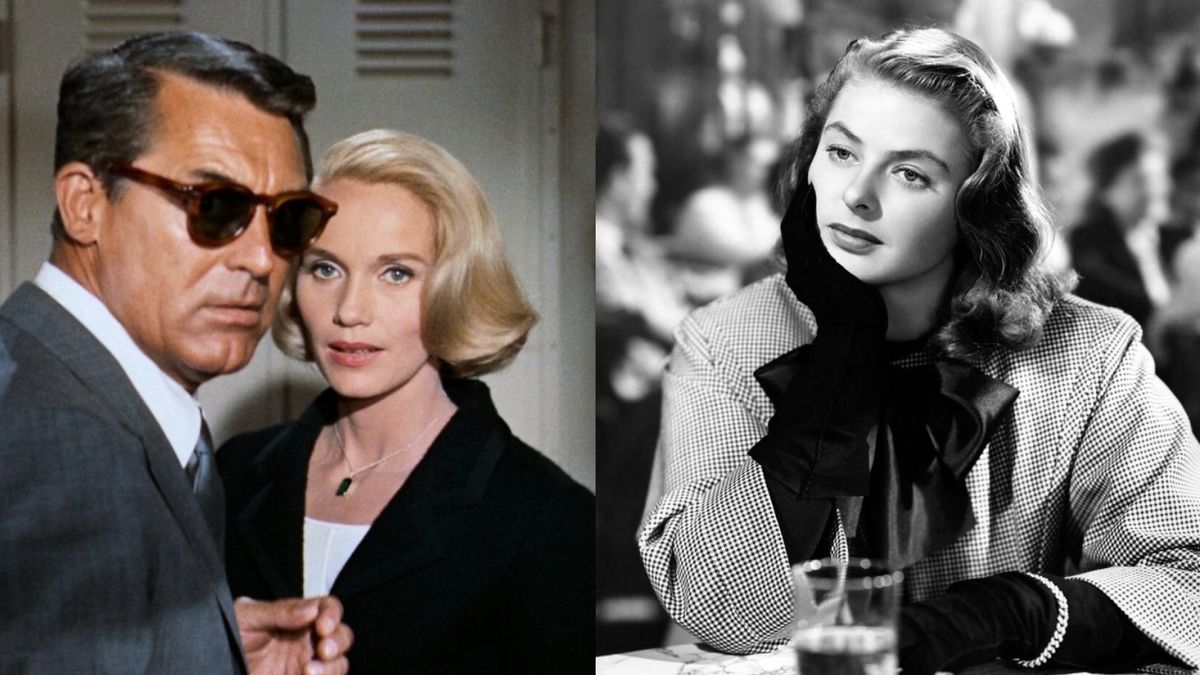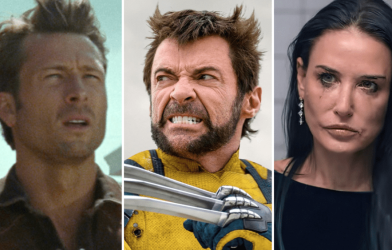The art of filmmaking may have been a new form during the Old Hollywood era, but it still garnered some of the best movies of all time. Most every cinephile can agree that early filmmakers and stars of the silver screen created a wealth of films long before technicolor became the norm. It was the heyday of film noir, screwball comedy, early, inventive horror, and romantic dramas. The period was also primarily defined by the Hays Code, from 1934 to 1968, which was incredibly restrictive around depictions of sex and violence—meaning, filmmakers had to come up with innovative ways to tell stories and some of the most classic films of all time were made in this period.
Whether you grew up with movies of this era and want to revisit them or have yet to watch some of the greats, we’ve rounded up some essential, black-and-white essentials. Below, find the best Old Hollywood movies you should rewatch or watch for the first time.
‘All About Eve’ (1950)
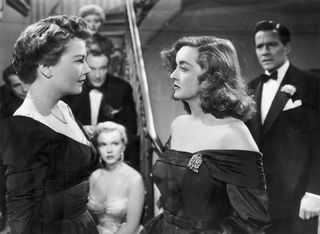
(Image credit: Getty Images)
Bette Davis plays an aging actress named Margo, and Anne Baxter plays the titular Eve—a seemingly forlorn young woman who increasingly reveals herself to be infiltrating Margo’s life and success. Before the “single white female” trope, there was this movie!
‘Arsenic and Old Lace’ (1944)
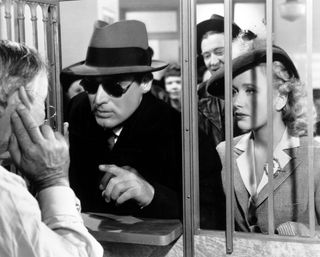
(Image credit: Getty Images)
This Frank Capra comedy crime film—with a killer title—stars Cary Grant as a marriage hater who falls for the girl next door (Priscilla Lane). Then, the film takes an absolute left turn as Grant’s character swiftly realizes on his wedding day that his family is more than just a bit eccentric. Shenanigans ensue!
‘Black Angel’ (1946)
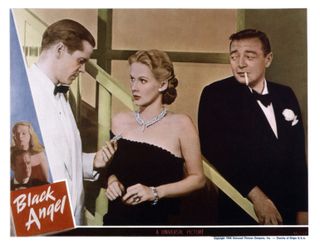
(Image credit: Getty Images)
This twisty noir stars Dan Duryea, June Vincent, and Peter Lorre. When a songwriter’s (Duryea) ex-wife is murdered, he helps a woman (Vincent) prove her husband (Lorre)—who has been convicted for the crime—didn’t do it. This goes in some surprising directions, so go in without reading anything.
‘The Bridge on the River Kwai’ (1957)
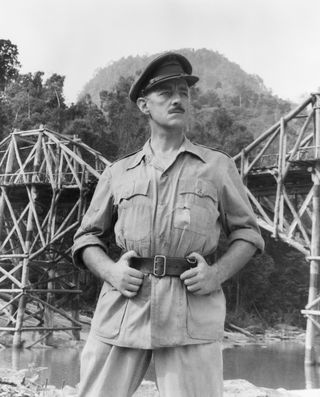
(Image credit: Getty Images)
If you’re not normally a fan of war films, this World War II classic is a fascinating drama: British prisoners of war are tasked with building a bridge, and—out of pride of their country’s engineering—they commit fully to the task, even though it’s collaboration with the enemy.
‘The Clock’ (1945)
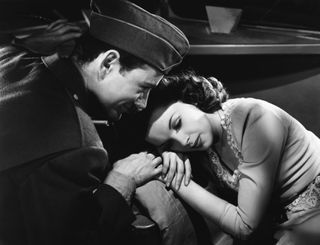
(Image credit: Getty Images)
This Judy Garland and Robert Walker was a major transition for Garland, since it was a more serious and dramatic role. A chance encounter between two strangers results in a whirlwind courtship and a dramatic final act of the film—realistic, perhaps not, but very romantic.
‘Dark Passage’ (1947)
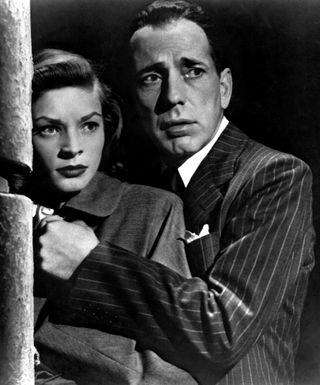
(Image credit: Getty Images)
One of four films that real-life spouses Humphrey Bogart and Lauren Bacall made together, this film noir centers around a man fleeing a prison sentence for a crime he didn’t commit, convalescing after plastic surgery in the home of a young woman (Bacall).
‘Double Indemnity’ (1944)
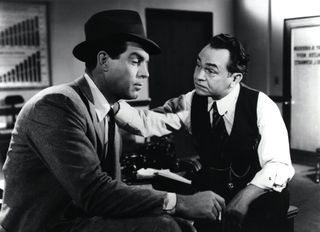
(Image credit: Getty Images)
If you’re not familiar with “double indemnity,” in which an insurance policy pays double when a person accidentally dies in an extremely rare way, just imagine that concept turned into a film noir. It stars Fred MacMurray and Barbara Stanwyck as an insurance salesman and unhappy wife, respectively.
‘The Guns of Navarone’ (1961)
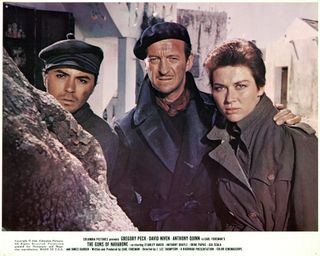
(Image credit: Getty Images)
A number of movies during this time period covered World War II in a variety of ways, from the grimmest dramas to action-adventure movies. This falls into the latter category and has an absolutely stacked ensemble cast (Gregory Peck, David Niven, Anthony Quinn, and others) in the plot to destroy a German fortress.
‘Hangover Square’ (1945)
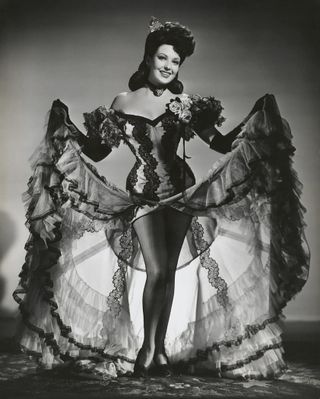
(Image credit: Getty Images)
This film noir starring Laird Cregar, Linda Darnell, and George Sanders has a bit of a strange conceit that nevertheless works in practice: A composer who suffers from amnesia begins to suspect he might be the source of a recent killing. Think of it as a more updated Jekyll and Hyde, if you will.
‘I Am a Fugitive from a Chain Gang’ (1932)
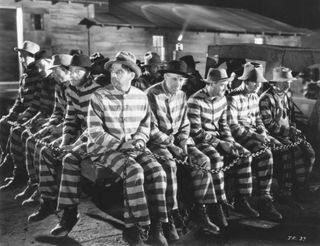
(Image credit: Getty Images)
This pre-Code crime tragedy covers a man (Paul Muni) who’s somewhat wrongfully convicted and escapes a brutal chain gang. He repeatedly tries to start a new life and keeps falling back into the system, making it one of the first films to be empathetic to prisoners and critical of the justice system.
‘The Importance of Being Earnest’ (1952)
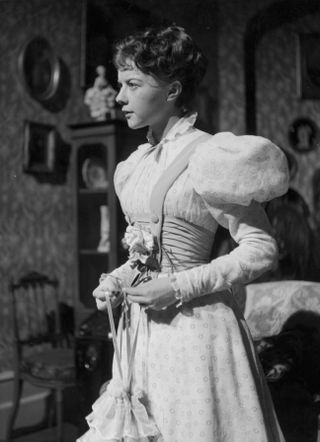
(Image credit: Getty Images)
If you’re unfamiliar with the Oscar Wilde play or this adaptation, just know that it’s one of the most classic films of its type. It goes beyond a comedy of errors and into farce territory, and the whole movie is really just a chance for actor Edith Evans as Lady Bracknell to deliver one of the funniest lines in film history.
‘In a Lonely Place’ (1950)
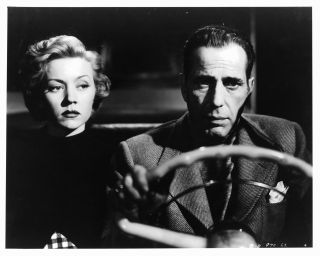
(Image credit: Getty Images)
This noir, starring Humphrey Bogart and Gloria Grahame, has a lot to say about the pitfalls of Hollywood and celebrity culture. It was ahead of its time, in other words. Bogart is a down-on-his-luck screenwriter with a temper, with Grahame as his lonely love interest.
‘It Happened One Night’ (1934)
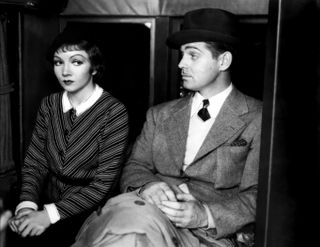
(Image credit: Getty Images)
This is one of the last “pre-Code” productions (before the Hays Code took effect), so it’s more overtly sexy—for its time anyway—than others on this list. A spoiled socialite and an unemployed reporter (Claudette Colbert and Clark Gable, respectively) meet and reluctantly realize they might be falling for each other.
‘The Lady Eve’ (1941)
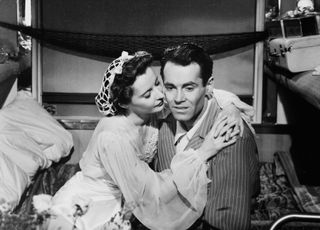
(Image credit: Getty Images)
Considered one of the best films of all time (but lost to many modern audience members), Barbara Stanwyck and Henry Fonda play an odd couple—con artist and snake expert, respectively—who meet on an ocean liner and somehow fall for each other. Shenanigans ensue!
‘A Letter to Three Wives’ (1949)
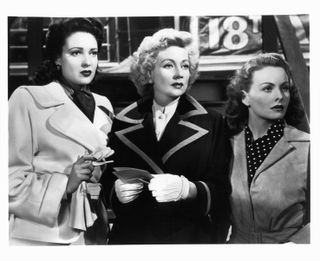
(Image credit: Getty Images)
This Oscar-winning film stars Jeanne Crain, Linda Darnell, and Ann Sothern as three wives who receive a message from the mysterious Addie Ross who lets them know she’s sleeping with one of their husbands. No surprise, it results in some relationship tumult.
‘Love Crazy’ (1941)
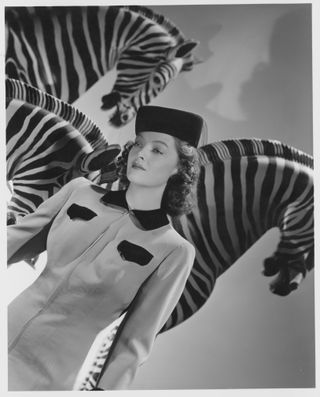
(Image credit: Getty Images)
If you couldn’t tell from the photo, this is a screwball comedy, which stars long-time on-screen partners William Powell and Myrna Loy. Here, the two play a happily married couple whose family and friends are conspiring to break them up. Put aside the slightly odd premise and go with it.
‘Make Way for Tomorrow’ (1937)
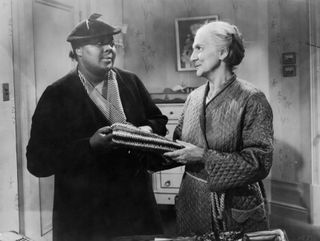
(Image credit: Getty Images)
A dramatic and moving tale about an older couple who lose their house in The Great Depression and have to consider their (extremely limited) options, this received mixed reviews at the time and later reclaimed by Roger Ebert as one of the best films ever made.
‘Midnight’ (1939)
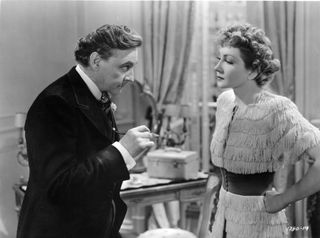
(Image credit: Getty Images)
Slightly wild premise aside (unemployed, stranded showgirl is hired by a millionaire to break up his wife’s affair with another man), this screwball comedy is an unmitigated delight. Claudette Colbert plays the showgirl whose life takes some increasingly wild turns.
‘Mildred Pierce’ (1945)
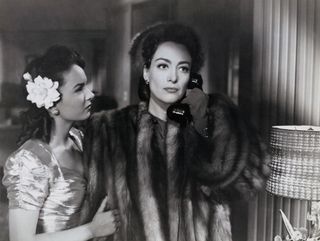
(Image credit: Getty Images)
This melodrama-noir starring Joan Crawford nabbed her a Best Actress Oscar; she plays a mother and restaurant owner who becomes embroiled in the case of her second husband’s murder. This takes an impressively dramatic turn and actually has quite a lot to say about social mores.
‘Mr. Blandings Builds His Dream House’ (1948)
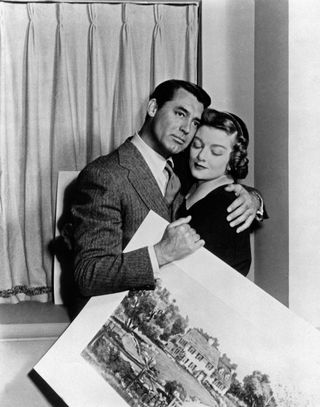
(Image credit: Getty Images)
One of a few movies starring Cary Grant and Myrna Loy as the leads, this follows the titular Blandings who—against the advice of just about everyone around them—buy a dilapidated house with visions of making their perfect home. Things go awry, naturally.
‘The Night of the Hunter’ (1955)
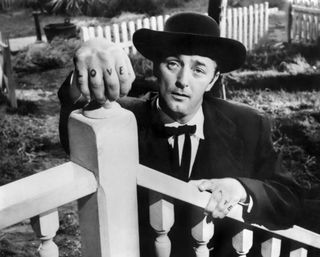
(Image credit: Getty Images)
This movie will scare the crap out of you—which is impressive, considering it was made in 1955. Robert Mitchum stars as a murderer and self-professed “preacher” who terrorizes two children to reveal where some money is hidden. And it really goes there, in an impressively terrifying way.
‘Ninotchka’ (1939)
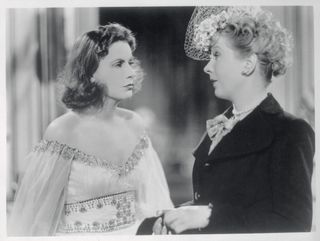
(Image credit: Getty Images)
This romantic comedy starring Melvyn Douglas and Greta Garbo (her first-ever comedy) and is quite the caper: a stern Soviet Union diplomat (Garbo), “Ninotchka,” is in Paris to oversee a sale of stolen Russian jewels… then runs right into a debonair bachelor (Douglas).
‘North By Northwest’ (1959)
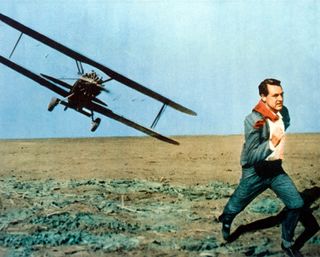
(Image credit: Getty Images)
This Alfred Hitchcock film is a forerunner of the modern action thriller, if you couldn’t tell by the above photo. It’s also a parody of the spy film, while also being an exceptional example of the genre—with Cary Grant as the innocent man pursued by shadowy forces.
‘Notorious’ (1946)
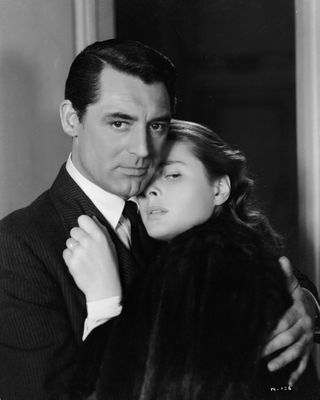
(Image credit: Getty Images)
If you’re unfamiliar with this Hitchcock film—but you like movies of his—put this on, as it represents the director in his more “adult” style taking on a love story for the first time. As such, the film centers around a matter of espionage and features a love triangle with Cary Grant, Ingrid Bergman, and Claude Rains.
‘Panic in the Streets’ (1950)
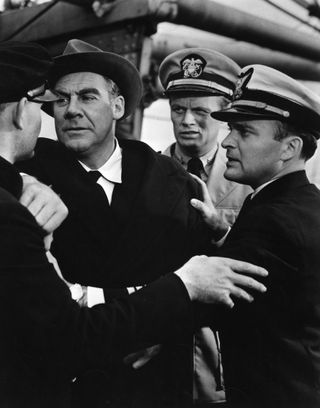
(Image credit: Getty Images)
Imagine: a public health officer (Richard Widmark) and police detective (Paul Douglas) are racing against the clock to find the carriers of a virus and prevent a deadly pandemic. With some impressive foresight, this film also doubles as a noir-thriller that really does live up to that tense premise.
‘Perfect Strangers’ (1945)
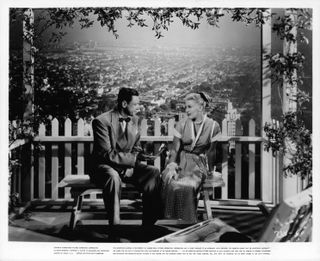
(Image credit: Getty Images)
In this British drama, timid couple (Robert Donat and Deborah Kerr) are transformed, separately, during World War II and emerge completely different people. The now-“perfect strangers” must contend with their relationship and what to do with their new lives.
‘The Strange Love of Martha Ivers’ (1946)
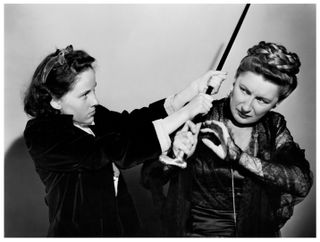
(Image credit: Getty Images)
The above photo basically gives away the inciting incident of the movie, but: a young Martha (Janis Wilson) accidentally kills her terrible aunt (Judith Anderson) and marries the person whom she thinks is the only witness to her crime to keep him quiet. In adulthood, the woman (played by Barbara Stanwyck) realizes her childhood friend has come back to town—but what does he know?
‘Sudden Fear’ (1952)
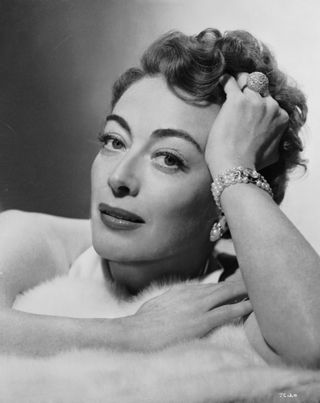
(Image credit: Getty Images)
Film noir was one of the most important genres during this time, and Sudden Fear is a nice example of a tense, thrilling mystery. Joan Crawford plays Myra, who marries a man (Jack Palance) who may not have the best of intentions.
‘The Thin Man’ (1934)
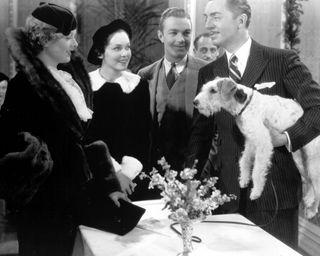
(Image credit: Getty Images)
This pre-Code comedy-mystery stars William Powell as a retired investigator and Myrna Loy as his wealthy wife who’s longing for adventure. No surprise, but when he’s tasked with coming out of retirement, she’s all for it, and various entanglements ensue.
(1950)
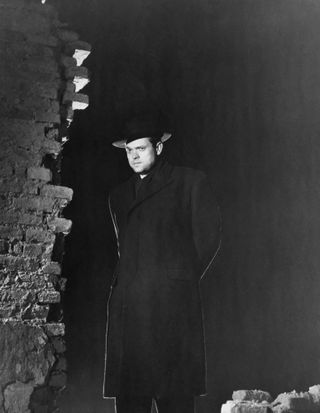
(Image credit: Getty Images)
This film noir is considered one of the best of the genre, not to mention one of the best British films of all time. Joseph Cotten plays a man who goes in search of his missing best friend (played by Orson Welles), all set in war-torn Vienna at the start of the Cold War.
‘Unfaithfully Yours’ (1948)
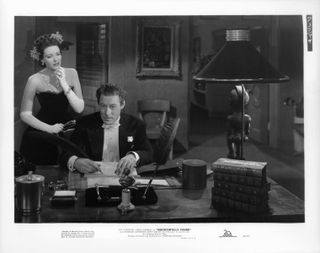
(Image credit: Getty Images)
If you like either black comedy or a comedy of errors, this is essentially both. Rex Harrison is a paranoid composer who invents a story about his wife (Linda Darnell) cheating on him in his mind, then imagines three scenarios by which he might handle the situation. Nothing goes according to plan.
‘Woman in the Dunes’ (1964)
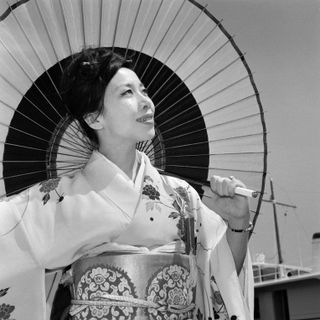
(Image credit: Getty Images)
This Japanese film directed by Hiroshi Teshigahara and considered to be his best films (and one of the best Japanese films ever made). A young teacher is trapped by the villagers in a remote area and enslaved as a prisoner alongside a young woman (Kyōko Kishida, pictured here at Cannes).

